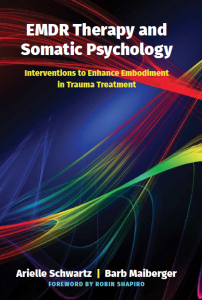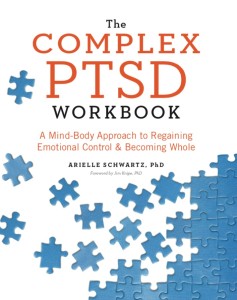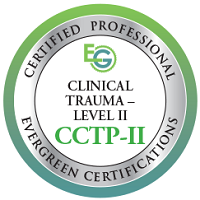Illuminate a Path to Freedom

If you have grown up with long-term, chronic trauma exposure you might find it difficult to accurately perceive whether people or places are safe or trustworthy. Sometimes, it can become difficult to tell differentiate between experiences that occurred in the past and what is happening now, in the present moment. The polyvagal theory helps us understand the neural circuits involved in these types of symptoms of PSTD and can illuminate a path to freedom.
Initial research about stress and trauma identified the sympathetic nervous system as responsible for PTSD symptoms. As a result, symptom reduction emphasized accessing the healing power of the parasympathetic nervous system and the “relaxation response”. At that time, the parasympathetic nervous system was only associated with our ability to rest, digest, regenerate, and heal from injury. While the parasympathetic nervous system does play a role in healing, it isn’t the whole story.
“It turns out that the parasympathetic nervous system is not only associated with relaxation but is also implicated with symptoms of PTSD. Stephen Porges introduced the polyvagal theory as a means to help us understand this dual function of the parasympathetic nervous system. His work reveals an evolutionary older survival mechanism in which the parasympathetic nervous system leads us to immobilize or “faint” in the face of a life-threatening event. Most importantly, the polyvagal theory teaches you to engage your social nervous system to consciously inhibit your defensive system. This allows you to finally find freedom from trauma symptoms and experience a deeply nourishing sense of safety here and now.”
–Dr. Arielle Schwartz
Adaptation as Survival

If you have grown up in a chronically threatening environment you probably had to adapt to survive. Adaptations occur emotionally, behaviorally, and within the nervous system. These are characteristic for Complex PTSD (C-PTSD). For example, you might have carried toxic shame, learned to avoid potentially dangerous situations, or dissociated when you couldn’t escape. All of these behaviors may have once served an important purpose. However, as adults, these same behaviors often create problems in your relationships, ability to parent children, or to be successful in your work.
One key to healing from C-PTSD is to to develop self-compassion. The Polyvagal theory teaches us that post traumatic stress symptoms are biologically based and somatically experienced. Once you understand the physiology behind C-PTSD symptoms you realize why you cannot simply think your way out of your trauma reactions. While you might continue to repeat the behaviors that helped you survive, it is essential to learn how to lean into yourself with love.
The Polyvagal Theory

The polyvagal theory describes three neural circuits that underlie different ways of negotiating with our environment. When we feel safe we rely upon a neural circuit that promotes social engagement behaviors. He calls this the social nervous system. This part of the parasympathetic nervous system engages neural structures that inhibit our defensive systems. This relies upon the myelinated ventral vagus nerve which allows us to engage socially by making eye contact, softening our voice tone, and expressing care with our face. Importantly, the social nervous system can facilitate immobilization within a context safety to promote greater closeness or intimacy.
Initially, when we experience a threat we might rely upon our social nervous system to resolve the situation. We might reach out for connection or proximity with another to reestablish safety. However, if this is unsuccessful or if the threat is more extreme, we will begin to engage the sympathetic nervous system activation of fight or flight.
If we are unable to resolve the threatening situation by fighting or fleeing then we will begin to engage an unmyelinated, evolutionarily older part of the vagus nerve to survive. This is especially the case in situations that are life threatening in which there is no escape. The dorsal vagal neural pathway is also part of the parasympathetic nervous system; however, this time immobilization becomes a defensive response. Typically, this is referred to as the “faint” response. Sometimes, one can literally faint because the dorsal vagal pathway reduces blood flow to the brain. Short of fainting, this defensive pathway can lead to symptoms such as dizziness, nausea, or fatigue all symptoms of dissociation.
Your physiology not only holds the memories of trauma but also holds an important key to recovery. The Polyvagal theory points us toward another key to healing…your capacity to engage the social nervous system. You can facilitate health of your social nervous system by developing mindful awareness of your body sensations such as your heart rate or breath. This helps you to identify your own personal signs of stress and allows you respond right away—before the stress feels overwhelming or out of your control.
Attentional Response Bias

Unfortunately, people with Complex PTSD have a difficult time orienting to safety…even in situations where there is no current threat. This is because it can be difficult to differentiate between experiences that occurred in the past and what is happening right now, in the present moment. The past and present tend to get blurred because the physiological alarm bells that continue to sound. This process is referred to as “attentional threat bias,” a factor that maintains and exacerbates post traumatic stress symptoms.
Attentional response bias accounts for the greater likelihood that individuals with PTSD perceive neutral faces as aggressive and fearful faces as angry. Furthermore, once a threat has been perceived, these individuals often have difficulty disengaging from such stimuli. In other words, they perseverate on the perceived threat and it becomes more and more difficult to feel safe. This can perpetuate a chronic state of fight or flight which leads to a vicious cycle of anxiety.
This is why it is often difficult for individuals with C-PTSD to develop healthy, lasting relationships. First, there may be little or no history of actually having safe and nurturing people in your life. Secondly, it is harder to perceive people as safe and nurturing…even when they are.
However, research shows us that attentional control can help reduce attentional threat bias (Bardeen & Orcutt, 2011). What this means is that as you focus your attention on cues that let you know that you are safe, now you can learn to override the drive to focus on threats. Of course, this only works if indeed you are in a safe situation now. Practicing attentional control helps you to become a better detective and eliminate “false positives” in which you perceive a threat in a situation or person who is actually safe. As you become better able to recognize the safety cues in your environment you begin to inhibit unnecessary defensive activation in body and mind.
The Takeaway

Healing from C-PTSD involves recognizing that there is another way to live. You are not doomed to repeat the patterns of your past. You can use the polyvagal theory to help you heal from C-PTSD using the following important steps:
- Self-Compassion: Develop self-compassion for your symptoms. Recognize the physiological, somatic basis of symptoms and why you cannot simply think your way out of your trauma reactions.
- Develop Somatic Awareness: Learn to mindfully track subtle changes in your body sensations and heart rate. Identify your own personal signs of stress. This will help you respond right away before the stress starts to feel overwhelming or out of your control. We call this staying in the window of tolerance.
- Practice Attentional Control: Practice focusing your attention on specific cues in your environment that remind you that you are safe now. Look around your room. Notice the light filtering through a window, a piece of art on the wall, or how it feels to be reading this article. You can also listen to a favorite piece of music, hold an object in your hand, or notice the calming scent of an essential oil.
Remember, you are myelinating the neural pathways of your social nervous system every time you feel safe, connected to another person, or compassionate toward yourself. Each time you practice strengthening your social nervous system it will become stronger. You can change your physiology one day at a time. And, overtime it will become easier to connect to positive states and override defensive symptoms associated with post traumatic stress.
Heal and Learn with Dr. Arielle Schwartz
Through the end of December 2018, you can order the EMDR Therapy and Somatic Psychology book directly from W. W. Norton at a 20% discount with free shipping. The coupon code is EMDRSP18 — Click here to order.

The Complex PTSD Workbook, is available on Amazon! Click here to check it out.

You can learn more tools for regulation of your vagus nerve here:
- Polyvagal Theory unlocks PTSD
- Natural Vagus Nerve Stimulation
- Vagus Nerve Yoga for Balance
- EMDR Therapy for Complex PTSD
About Dr. Arielle Schwartz

Dr. Arielle Schwartz is a licensed clinical psychologist, wife, and mother in Boulder, CO. She offers trainings for therapists, maintains a private practice, and has passions for the outdoors, yoga, and writing. Dr. Schwartz is the author of The Complex PTSD Workbook: A Mind-Body Approach to Regaining Emotional Control and Becoming Whole (Althea press, 2016) and co-author of EMDR Therapy and Somatic Psychology: Interventions to Enhance Embodiment in Trauma Treatment (Norton, 2018). She is the developer of Resilience-Informed Therapy which applies research on trauma recovery to form a strength-based, trauma treatment model that includes Eye Movement Desensitization and Reprocessing (EMDR), somatic (body-centered) psychology and time-tested relational psychotherapy. Like Dr. Arielle Schwartz on Facebook, follow her on Linkedin and sign up for email updates to stay up to date with all her posts.








